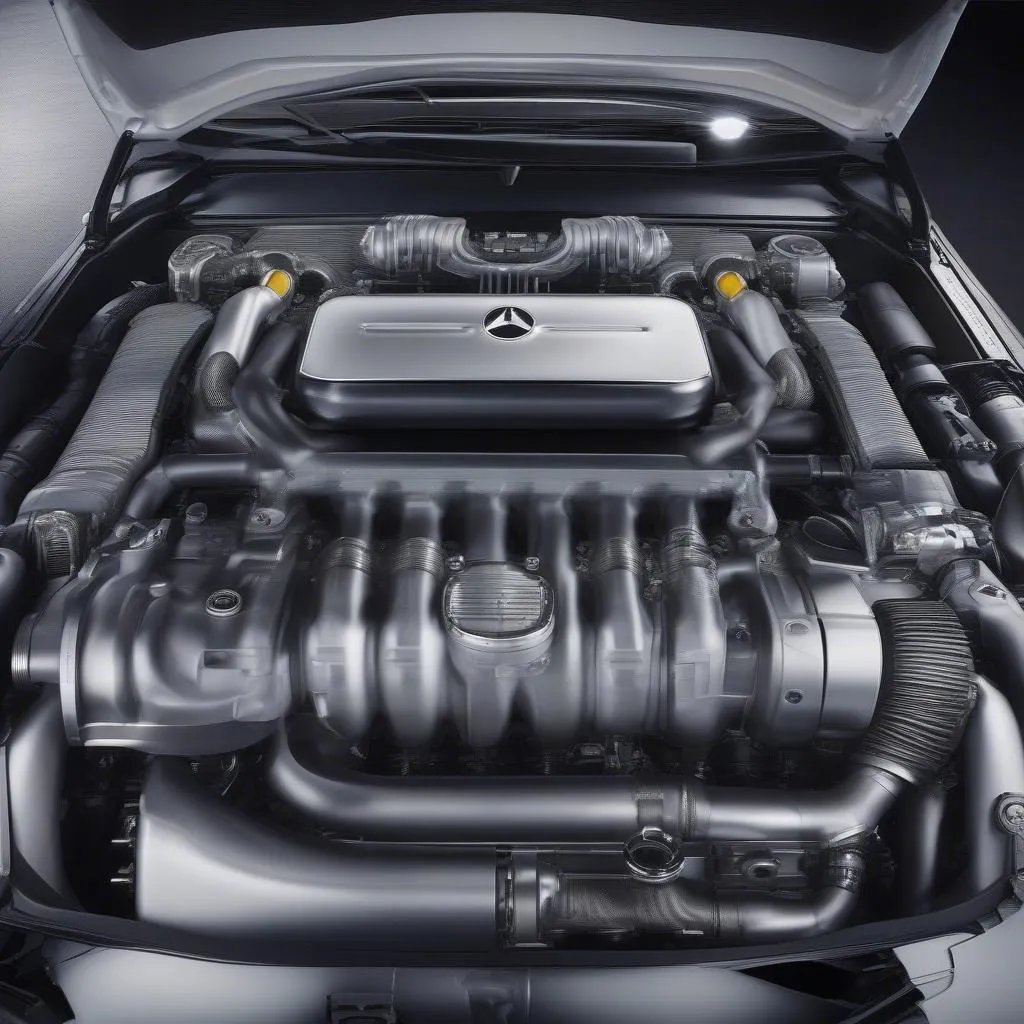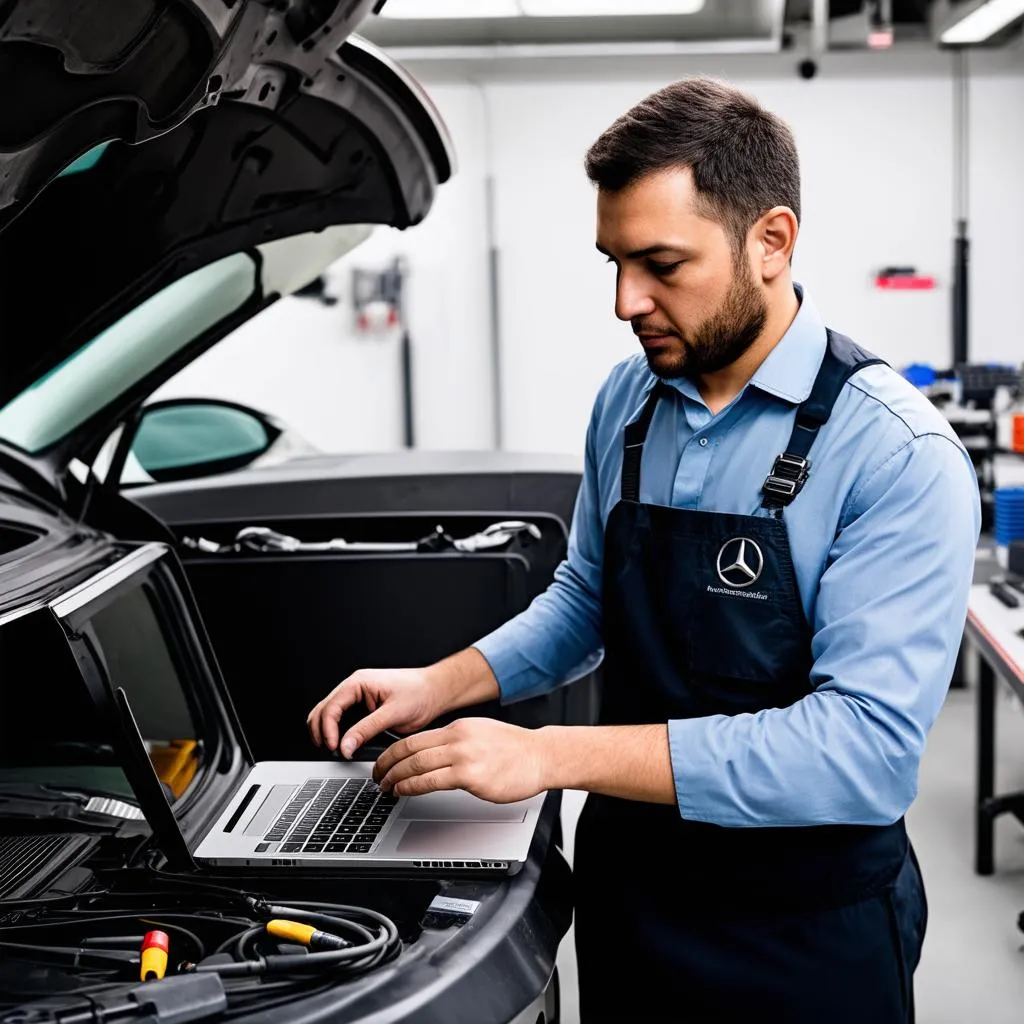Is your 2005 Mercedes E320 struggling to start, sputtering at high speeds, or leaving you stranded with a distinct smell of gasoline? These could be signs of a failing fuel pump, a crucial component responsible for delivering fuel from the tank to the engine. While a trip to the mechanic is always an option, this guide will equip you with the knowledge to diagnose and potentially fix the issue yourself.
Understanding the Fuel Pump Problem
Before diving into repairs, it’s crucial to pinpoint if the fuel pump is the culprit. “A common misconception is that any engine trouble automatically points to a bad fuel pump,” says automotive expert, Michael Turner, author of “The Complete Car Maintenance Manual.” “However, several components could be at fault.”
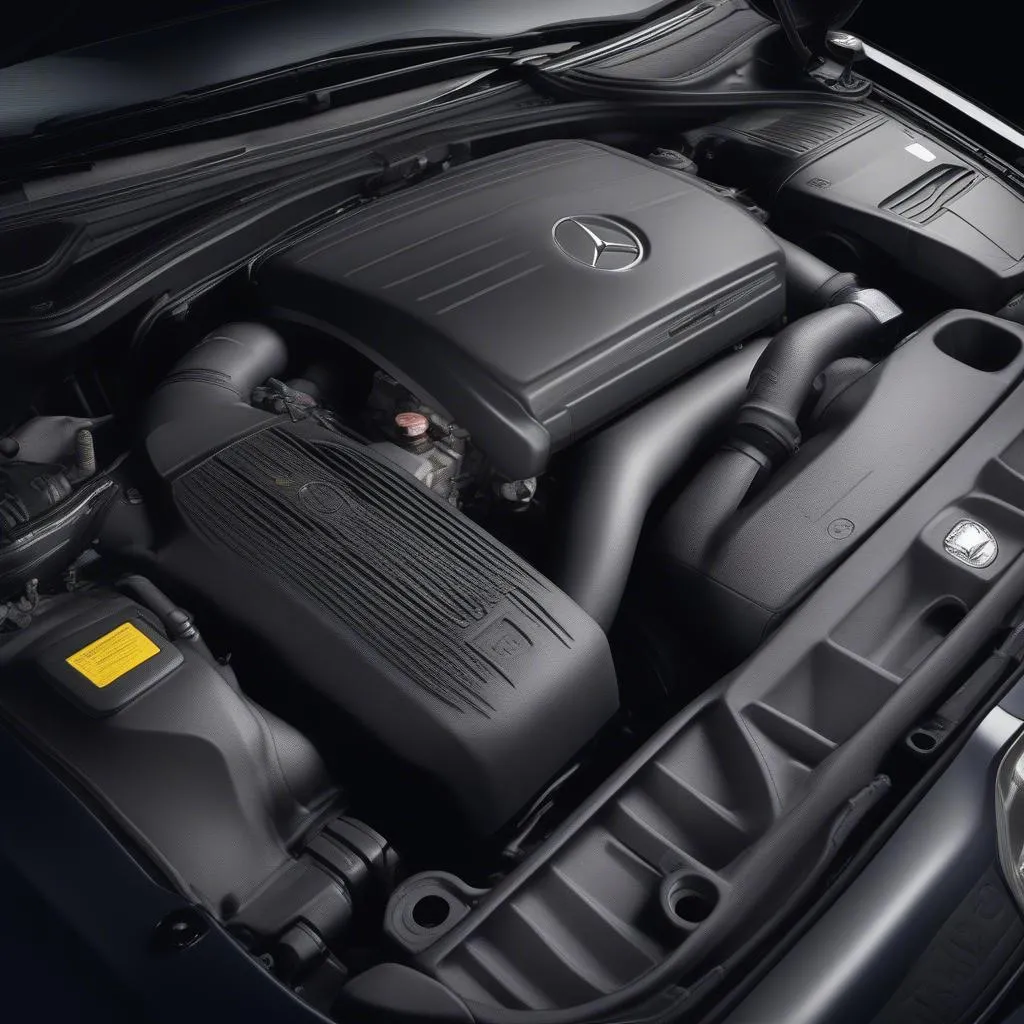 Mercedes E320 Engine
Mercedes E320 Engine
Recognizing the Symptoms of a Failing Fuel Pump
Here are some telltale signs that your Mercedes E320’s fuel pump might be on its last legs:
- Difficulty Starting: The engine cranks but struggles to fire up, especially after sitting for a while.
- Sputtering Engine: The engine hesitates or sputters, especially at high speeds or under heavy acceleration.
- Loss of Power: Noticeable decrease in engine power and acceleration.
- Whining Noise from the Fuel Tank: A high-pitched whine coming from the rear of the vehicle, indicating a failing pump motor.
- Sudden Engine Stalling: The engine unexpectedly shuts off, especially during driving.
- Check Engine Light: The “Check Engine” light on your dashboard illuminates, often accompanied by a diagnostic trouble code (DTC) related to fuel system pressure.
Gathering Your Tools and Supplies
Before you begin, make sure you have these essentials:
- New Fuel Pump: Purchase a high-quality replacement fuel pump compatible with your 2005 Mercedes E320.
- Socket Set and Wrenches: A variety of sizes to loosen and tighten bolts and fuel lines.
- Screwdrivers: Both Phillips and flathead for removing panels and connectors.
- Fuel Line Disconnect Tool: This specialized tool simplifies the safe removal of fuel lines.
- Safety Glasses and Gloves: Protect your eyes and hands from fuel and debris.
- Jack and Jack Stands: Safely lift and support your vehicle.
- Fuel Container: Drain old fuel safely.
- Shop Rags: Clean up spills and residue.
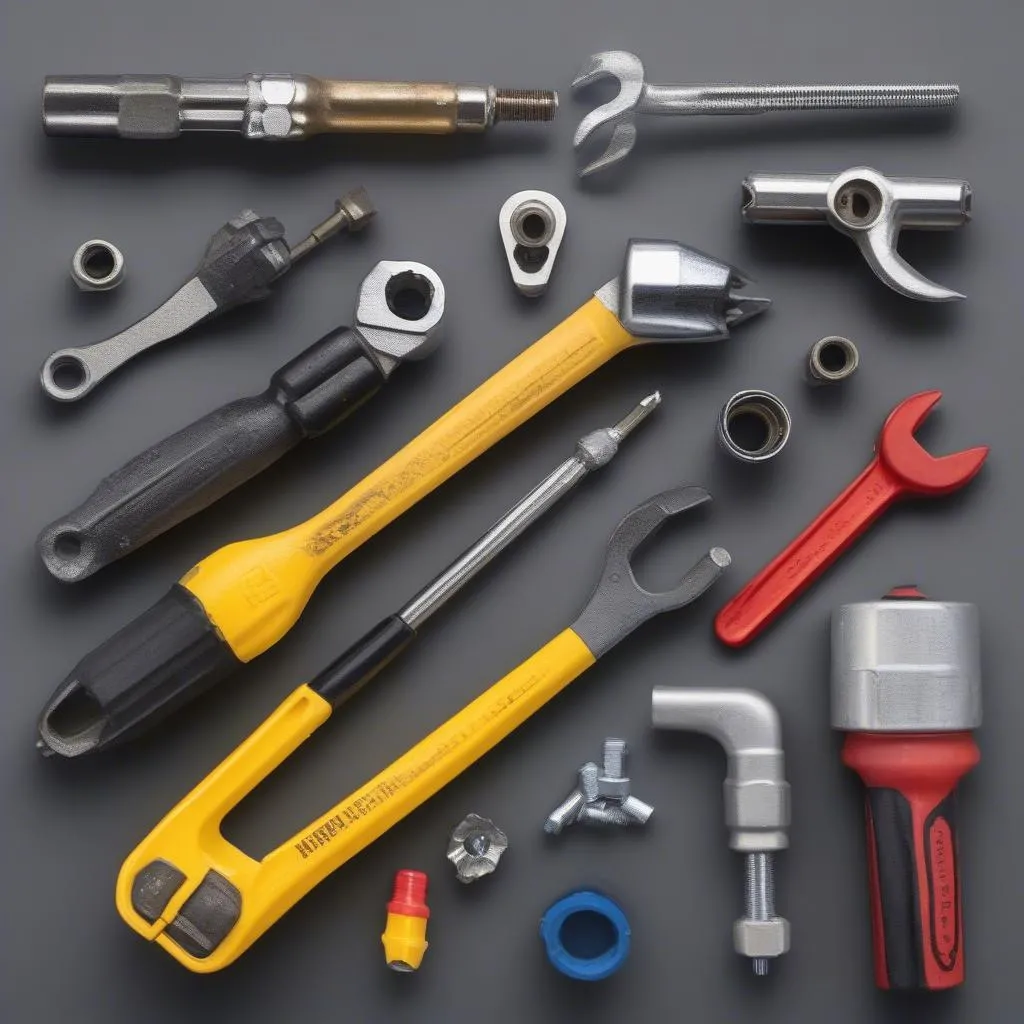 Car Repair Tools
Car Repair Tools
Step-by-Step Fuel Pump Replacement Guide
Safety First: Work in a well-ventilated area, away from open flames. Disconnect the negative battery cable before starting.
-
Locate the Fuel Pump: In most 2005 E320 models, the fuel pump is located inside the fuel tank, accessed from beneath the rear seats. Consult your owner’s manual for the precise location.
-
Relieve Fuel Pressure: Locate the fuel pump fuse in the fuse box (refer to your owner’s manual) and remove it. Start the engine and let it run until it stalls due to lack of fuel. This relieves pressure in the fuel lines.
-
Access the Fuel Pump: Remove the rear seat bottom and any carpeting or insulation to expose the fuel pump access panel.
-
Disconnect the Fuel Lines: Carefully disconnect the fuel lines from the fuel pump assembly. Use the fuel line disconnect tool to prevent damage.
-
Remove the Fuel Pump Assembly: Loosen the retaining ring or bolts securing the fuel pump assembly to the fuel tank. Carefully lift the assembly out, being mindful of the fuel level sensor float arm.
-
Install the New Fuel Pump: Transfer the fuel level sensor and other components to the new pump assembly, ensuring a secure fit.
-
Reassemble and Test: Carefully lower the new pump assembly into the tank and secure it with the retaining ring or bolts. Connect the fuel lines, reconnect the battery, and start the engine to check for leaks and proper operation.
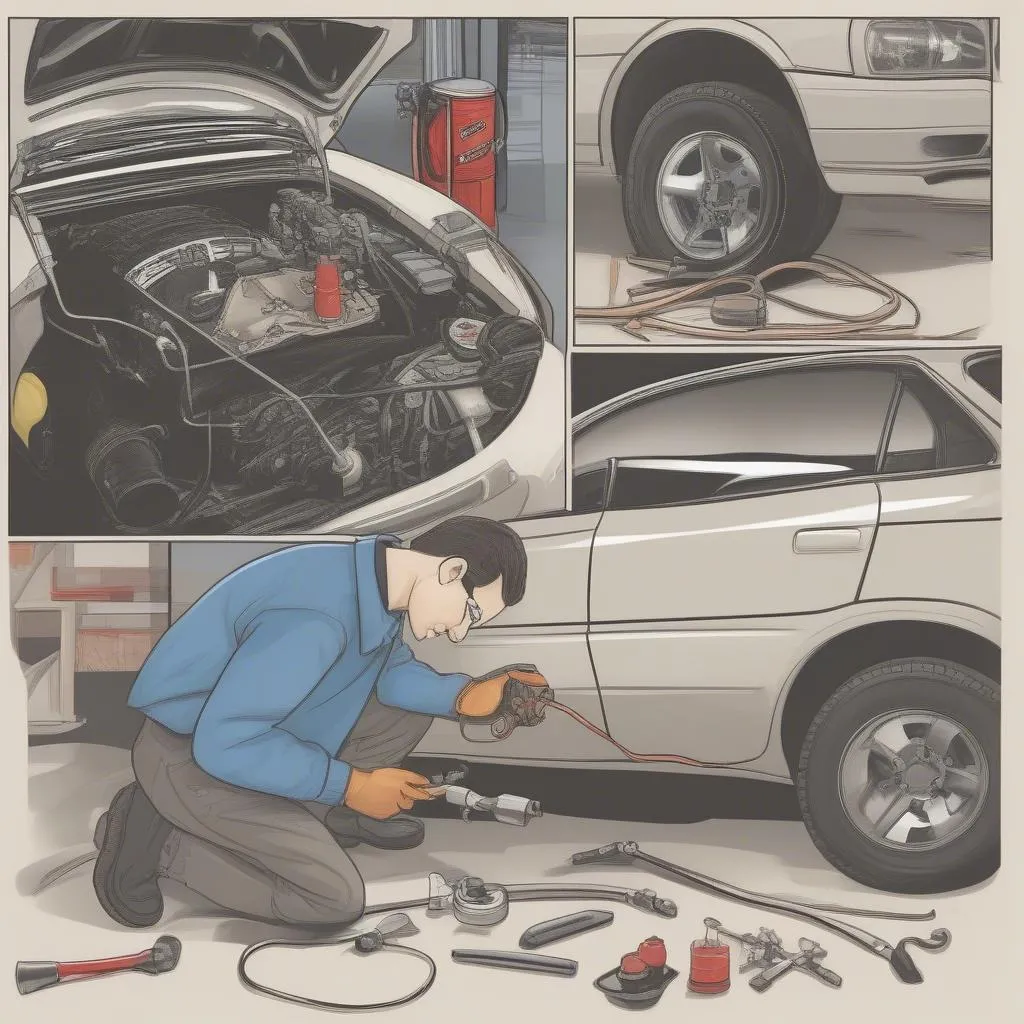 Fuel Pump Replacement
Fuel Pump Replacement
FAQs About Mercedes E320 Fuel Pump Problems
Q: Can I drive my Mercedes E320 with a failing fuel pump?
A: It’s highly discouraged. Driving with a failing fuel pump can lead to engine damage and leave you stranded.
Q: How long does a fuel pump last on a Mercedes E320?
A: Fuel pump lifespan varies, but they typically last around 100,000 miles or more. Driving conditions and fuel quality can influence their longevity.
Q: Can a clogged fuel filter cause similar symptoms?
A: Yes, a clogged fuel filter can restrict fuel flow, mimicking fuel pump issues. It’s a good practice to replace the fuel filter during a fuel pump replacement.
Q: Are there diagnostic tools to help pinpoint fuel pump problems?
A: Yes, professional-grade OBD-II scanners, like those offered by CARDIAGTECH, can read diagnostic trouble codes and monitor fuel system pressure, aiding in accurate diagnosis.
In Conclusion
Replacing a fuel pump on a 2005 Mercedes E320 is a moderately challenging DIY project. While this guide provides a general overview, always refer to your vehicle’s service manual for specific instructions and safety precautions. If you’re uncomfortable tackling this repair yourself, seeking assistance from a qualified mechanic is always a wise decision.

